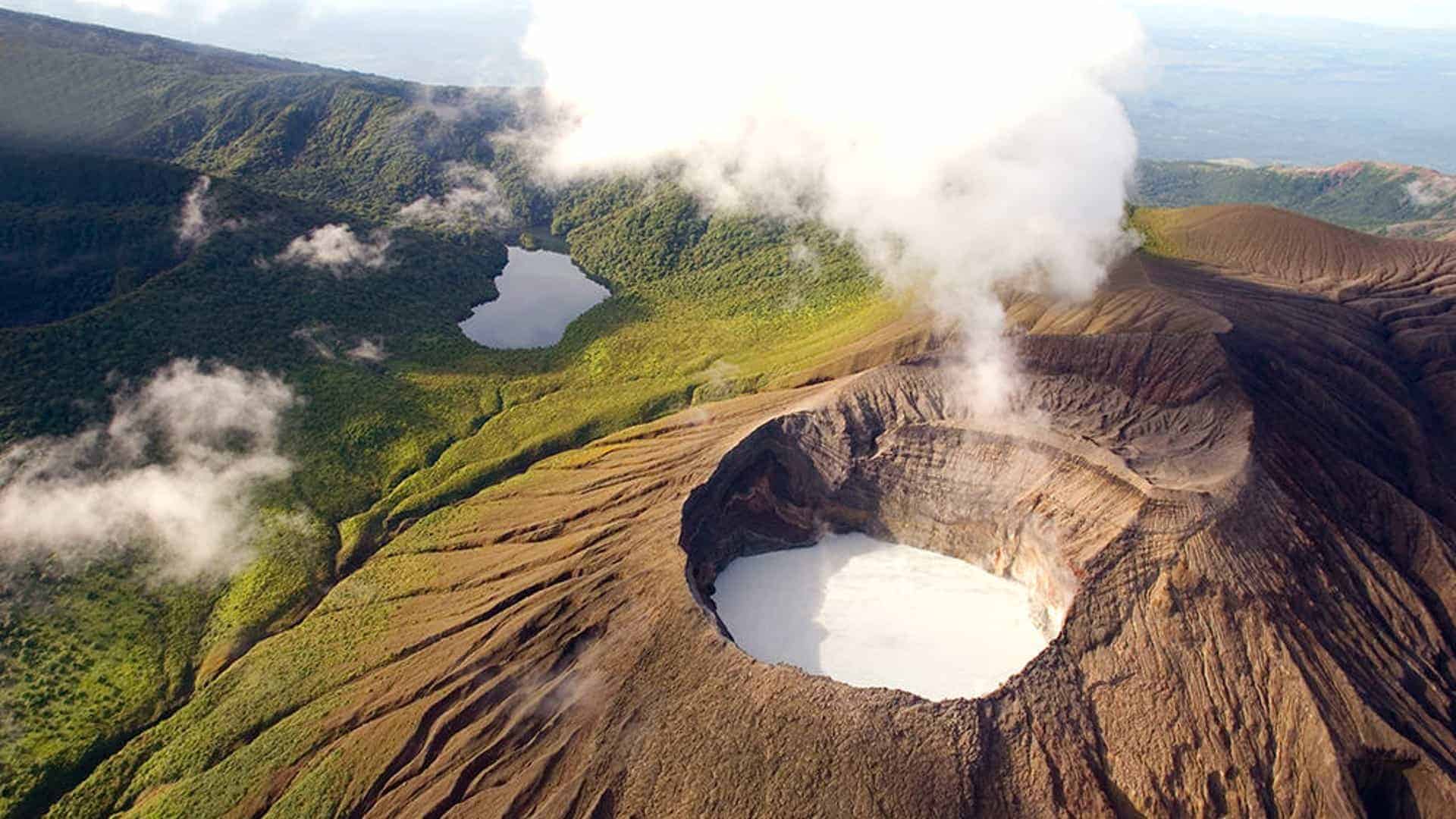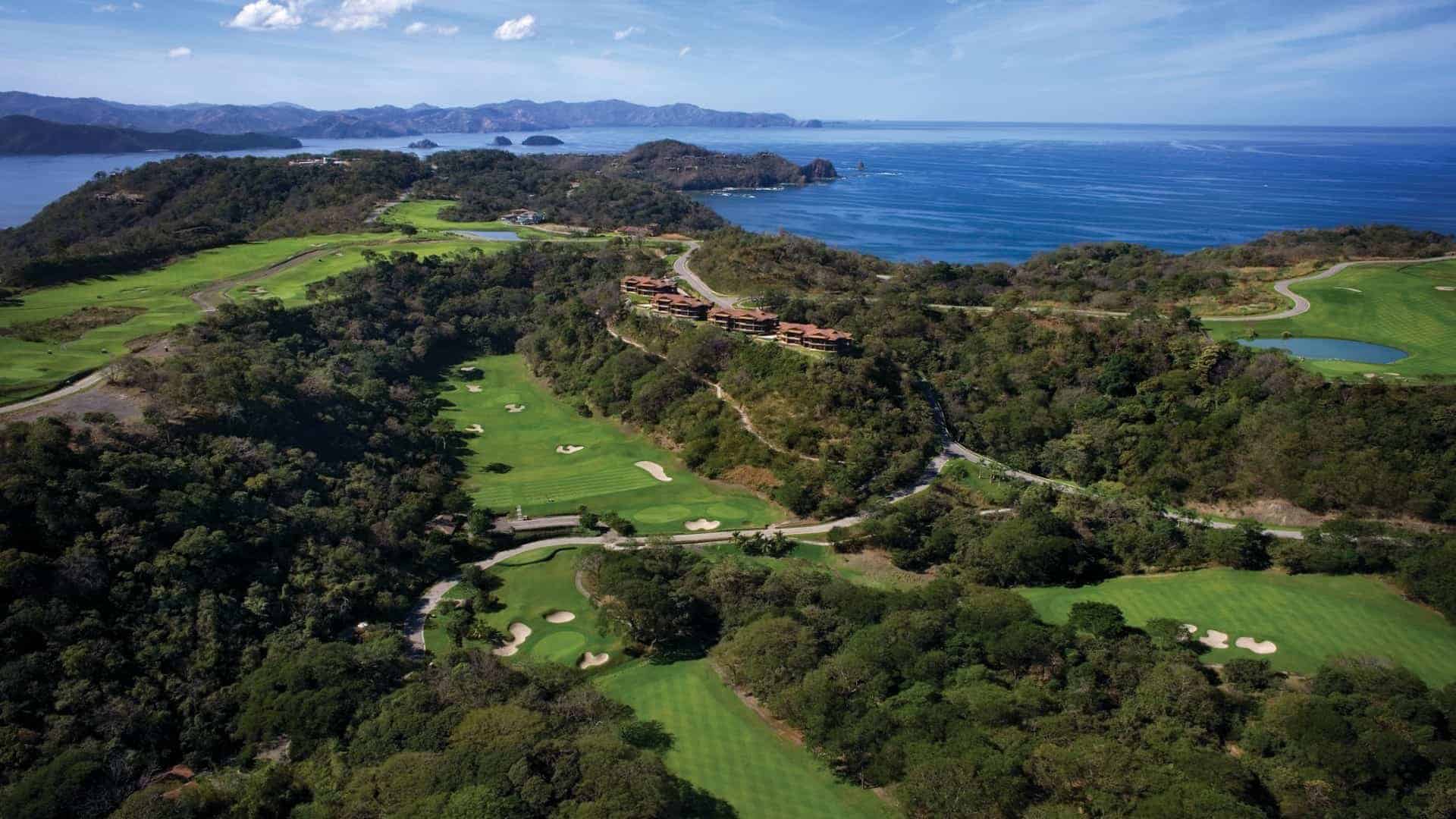Table of contents
I grew up with a simian sibling! Freddy the monkey shared my playpen, wore my diapers, snatched favorite toys from my grasp and generally wreaked havoc in my grandparents’ household.
In the U.S. in the 1960s and ‘70s, it was possible to buy a pet monkey from advertisers in comic books and magazines. Over 170,000 monkeys were imported from Peru and Colombia and found their way into captivity, into average (though quirky) American homes like my own. Freddy was a gift to my aunt from an admiring boyfriend, who thought a monkey would be the key to her animal-loving heart.
The gift of an unruly primate backfired, however, reinforcing the fact that wild animals like monkeys are best left in their natural habitats, free to swing branch to branch in favored places like the lush jungles and dry forests of Costa Rica.
There are four types of monkeys in Costa Rica, and three of them can be found in the wild in the Guanacaste region. So, where to see monkeys in Costa Rica? I’ll share wild and sustainable options for monkey viewing in and around popular Pacific beaches and nearby national park destinations.


The four monkey species in Costa Rica
The four species of monkeys native to Costa Rica are the white-faced capuchin (mono cariblanco), spider monkey (mono colorado or mono araña), the squirrel monkey (mono ardilla or titi), and the howler monkey (mono congo).
The white-faced capuchin monkey gets its name from the Capuchin friars in Italy, monks whose brown robes and hoods frame their faces. Similarly, the black body fur of the capuchin monkey frames its white facial fur and pink face. Up to 30 capuchins group together under an alpha male and alpha female. They are 12 to 22 inches long, excluding the tail, which is as long as the body, and they live 15 to 25 years in the wild. Capuchins are smart, ranking as the most intelligent primate in the Americas, and have been trained as animal actors and to assist people with disabilities. White-faced monkeys sometimes perform with organ grinders, and yes, that monkey named Marcel on “Friends” was a capuchin.

The gregarious capuchin adapts to humans out of curiosity, but that same curious nature can be a problem when rewarded with human food. On the other hand, their natural curiosity translates into nice photo ops when they check out passing tour boats. Voracious omnivores with a fierce-looking set of teeth, capuchins eat leaves, insects, fruits, lizards and crabs. Their population is stable, but habitat destruction is a threat.

The Geoffroy’s spider monkey weighs in as a larger species at up to 20 pounds. Spider monkeys’ legs and arms are well developed for agile movement, with the prehensile tail acting as a fifth appendage to propel the monkey through the canopy in swinging, flight-like maneuvers. Colors range widely from black and brown to reddish and lighter blond-brown tones. Spider monkey diet consists of leaves and fruits, nectars and insects. Their agility enables them to move swiftly in search of food, or to escape threats. In Guanacaste, spider monkeys are threatened by human hunters and natural predators, so they are not found as widely near beaches with less canopy, but can be spotted in national parks and other forested areas.

The comparatively tiny squirrel monkey, recognizable by its orange-colored back and white and black facial color, is the smallest of the monkeys and lives only on the Pacific Coast. Safety in numbers means their troops may range from 20 to as many as 75 individuals. The squirrel monkey is under a foot long, excluding its tail, and weighs less than two pounds. The squirrel monkey’s size makes its list of predators long, including snakes, birds of prey, cats and humans. Deforestation and loss of habitat are a threat, and unfortunately squirrel monkeys are sometimes kept as pets.
Squirrel monkeys are somewhat common in the Osa Peninsula, and can often be spotted scampering along power lines in Manuel Antonio. Their capture as pets has reduced the breeding population in the wild, and some subspecies are considered endangered. A few can be found in rehabilitation centers and sanctuaries.

The mantled howler monkey is the most common species in Guanacaste and is readily seen (and heard!) throughout the country. Howlers live in smaller troops averaging 12 monkeys led by a very vocal (howling) alpha male. They’re large creatures, up to 22 pounds, with a 3-foot body and equally long tail. They have black-brown hair and lighter brown, reddish, or even blond “saddles” of color draping their backs. A more recent emergence of orange-pigmented howlers in Costa Rica has scientists baffled in terms of the cause of the coloration. A howler’s lower jaw and neck area are large and pouch-like to accommodate the vocal cords which produce the guttural call that can reverberate for miles.
The howler’s call
Howlers are the world’s loudest terrestrial animal relative to their size. On my first trip to a sleepy Costa Rican beach town nearly 20 years ago, I woke to a surreal sound I could only describe as a cross between a pack of mournful dogs and a humpback whale. It was a howler monkey call, more than loud enough to wake me through closed windows and over the hum of an air conditioner!

Humans converse at around 50 decibels, but the eardrum can rupture at 200. A howler boasts a whopping call of 140 decibels. Compare that to a male African lion at 114 decibels. Howlers’ diet of leaves, seeds and blossoms means a more sedentary existence, a more limited territory than other types of monkeys, and more siestas. A male howler calls to alert the troop to strange noises or predators, turns it up a notch when females are attracted to his call, and yells his loudest when competing with other males for territory or females. The main reason for the howler’s call is believed to be for turf – alerting other monkeys to steer clear of his troop’s eating and sleeping territory.
Females, on the other hand, “howl” to communicate or to sound distress calls. Baby howlers make funny cooing sounds and squeals when playing and exploring. Today I easily recognize the pre-dawn “monkey alarm,” still as strange and exciting as ever, resonating across beaches and through treetops.
It is common to spot “viveros,” or howler monkey nurseries of mothers and small silver-gray babies in a group, moms lazing and children riding their backs or playing in nearby branches. A troop’s territory ranges from 3 to 25 acres. In a healthy habitat, a troop can circle slowly around the “neighborhood” feeding on new leaves, then the same tree’s flowers, and finally its seed pods or fruits after the leaves fall. The deciduous nature of Guanacaste’s dry forest means many trees shed leaves during the driest months to put their energy into flower and fruit production. It’s easy to spot slow-moving howlers as they alternately munch on flowers or mangos, then nap on exposed branches between courses.
When trees are cut down, howlers face threats traveling between disconnected clusters of trees and across roads to reach food. Natural predators, including felines and boa constrictors, and ground-dwelling hazards like dogs and vehicles, become bigger threats when howlers drop to the ground to amble to another tree. On the Pacific Coast, development adds to habitat loss and danger, and howlers often use electrical lines to reach other trees, resulting in electrocution and serious injury or death. Some newer developments use underground infrastructure to eliminate this risk, and the region’s electric provider has a system in place to identify danger spots and to install monkey “bridges” to enable safe passage.
Subscribe to our newsletter
to stay up to date
The downsides of captivity
Hormonal teen Freddy the monkey was much less “cute” as a pet than younger playpen-pal Freddy. My aunt had long since dumped her boyfriend and kept the monkey, but Freddy was a frustrated teen, jealous of males in the household like my dad and grandfather. He shrieked and hurled poo at visitors and flung himself onto the heads of men who dared enter the house, violently pulling their hair!
Monkeys becoming aggressive at sexual maturity explains why many are given up or abandoned after a few years in captivity, or are locked in restrictive cages. For male howlers, puberty means moving out of the familial troop at 3 years and starting anew with females who come into reproductive age at 3-1/2. It’s not uncommon to spot solitary males at this age, as they separate from the larger group and its alpha male.

Wild monkeys need to stay wild, not to become dependent on humans for a handout. It’s illegal to feed monkeys, or any other wild animal, in Costa Rica. Avoid the temptation to patronize businesses where monkeys are lured with food.
Where to see monkeys in Costa Rica in their natural habitats
If you’re in Guanacaste, you’re in prime monkey habitat, so keep your eyes peeled. You’ll probably hear the howlers before you see them, and they’re not shy about visiting populated areas like Tamarindo – or anywhere they can travel through the trees.
But monkeys especially thrive in protected areas like national parks, including the following:
- Rincón de la Vieja Volcano National Park: Howler, white-faced and spider monkeys abound throughout this large national park. Exploring trails on foot or horseback en route to scenic thermal features and hidden waterfalls brings you into prime monkey-viewing habitat.
- Arenal Volcano National Park: Howler, white-faced and spider monkeys also make their home in and around La Fortuna and the national park. Footpaths, ziplines and hanging bridges that take you into forested areas and higher canopy are best for viewing.
- Palo Verde National Park: Howler and white-faced monkeys can be spotted from wetland boat trips and on foot from trails among low dry forest trees throughout the park.

- Barra Honda National Park: Howler and white-faced monkeys are frequently spotted while hiking to the park’s cave system entrance and scenic overlook.
- Las Baulas Marine National Park: While the park is known for the protection of its namesake leatherback sea turtles, howler monkeys are frequently and easily viewed by boat tour throughout the park’s winding mangrove estuary.
- Santa Rosa National Park: This large park features diverse habitat from beach and mangrove to savanna-like pasture and dry forest, making it home to howler, white-faced and spider monkeys.
Where to see monkeys in Costa Rica in captivity
Though the word “zoo” is widely frowned on, there are dozens of animal rescue centers in Costa Rica where monkeys live in cages on public display. It’s important to understand that people typically don’t just go out and catch wild monkeys to put them in a zoo. Many were rescued from the pet trade or were born in captivity and have grown too reliant on humans for food and care to live in the wild. Many monkeys have to undergo rehabilitation after being electrocuted, attacked by a dog or hit by a car. Also, lone monkeys lacking a troop are in danger of being killed by other monkeys if released.
It’s exciting to see monkeys up close, but it’s also sad to know that many will spend the rest of their lives in a cage. Unfortunately, for most monkeys in captivity in Costa Rica, there are no better options. When possible, patronize those sanctuaries and facilities that make an effort to provide ample space and a safe and stimulating environment for their primate inhabitants.
Here are two of the top places to see monkeys at animal sanctuaries in Guanacaste:
- Diamante Eco Adventure Park: The Costa Rica Wildlife Sanctuary at Diamante, near Playas del Coco, is home to a number of monkeys who are unable to safely return to their natural habitat. The staff has worked hard to replicate monkey habitat for the animals, and educational tours are offered to explain the park’s rehabilitation efforts.
- Sibu Wildlife Sanctuary (Nosara): Sibu is committed to giving monkeys and other injured wildlife a second chance through its sanctuary, rehabilitation and protection efforts. At the Sibu website, you can “Adopt A Monkey” to provide rehabilitation care, or donate to efforts to reduce electrocutions of monkeys in Guanacaste.

Threats to monkeys and how you can help

Deforestation, forest fires, hunting and the pet trade have long plagued monkey populations in Costa Rica. Today, increased development and loss of canopy corridors near Pacific beaches are a constant threat, along with human and animal predators. In Costa Rica in 2021 alone, an estimated 7,000 animals were killed by power line electrocutions. On the positive side, reforestation efforts, forest fire prevention, construction of rope and fiber monkey “bridges” and education about the negative impact of keeping monkeys as pets have increased populations and reduced human threats.
How to help? Several organizations near Pacific beaches are planting native trees and corridors to increase food and habitat for monkeys and other wildlife. Visit, contribute or volunteer your time to the efforts of those above and support local monkey protection projects in your area:
- Salve Monos Costa Rica (“Save the Monkeys”): This organization was started in the town of Tamarindo in 2004 and focuses on helping monkeys thrive through habitat protection and reforestation, as well as prevention of electrocution and vehicle accidents. Several beach towns in Guanacaste now have their own chapters under the non-profit and partner with the Coopeguanacaste electric provider to build and install rope “bridges” and plant native trees to restore natural corridors.
Report sightings of monkeys crossing roads on the ground or using electrical wires to cross roads or to move between clusters of trees. Coopeguanacaste has a simple online incident report where you can provide details to protect monkeys at risk due to electrical lines or road crossings.
Freddy the monkey was surrendered to a small zoo in the Chicagoland area where he lived happily with his primate pals on Monkey Island. He initially responded to his name and ran to the edge of the island to greet us when called, but later (thankfully) chose his adopted troop over us. Education and animal rights advocacy have helped reduce the monkey pet trade in the U.S., but natural and manmade threats to monkeys remain.
Costa Rica enforces strong animal protection policy and boasts a world-class commitment to habitat restoration and protection. Costa Rica has also made efforts to improve conditions in zoos and to rehome captive animals to more appropriate sanctuaries and spaces. Enjoy seeing monkeys in sustainable natural environments and authorized rehabilitation sanctuaries in Costa Rica so we can all continue to wonder at their monkey business!

Subscribe to our newsletter
to stay up to date



